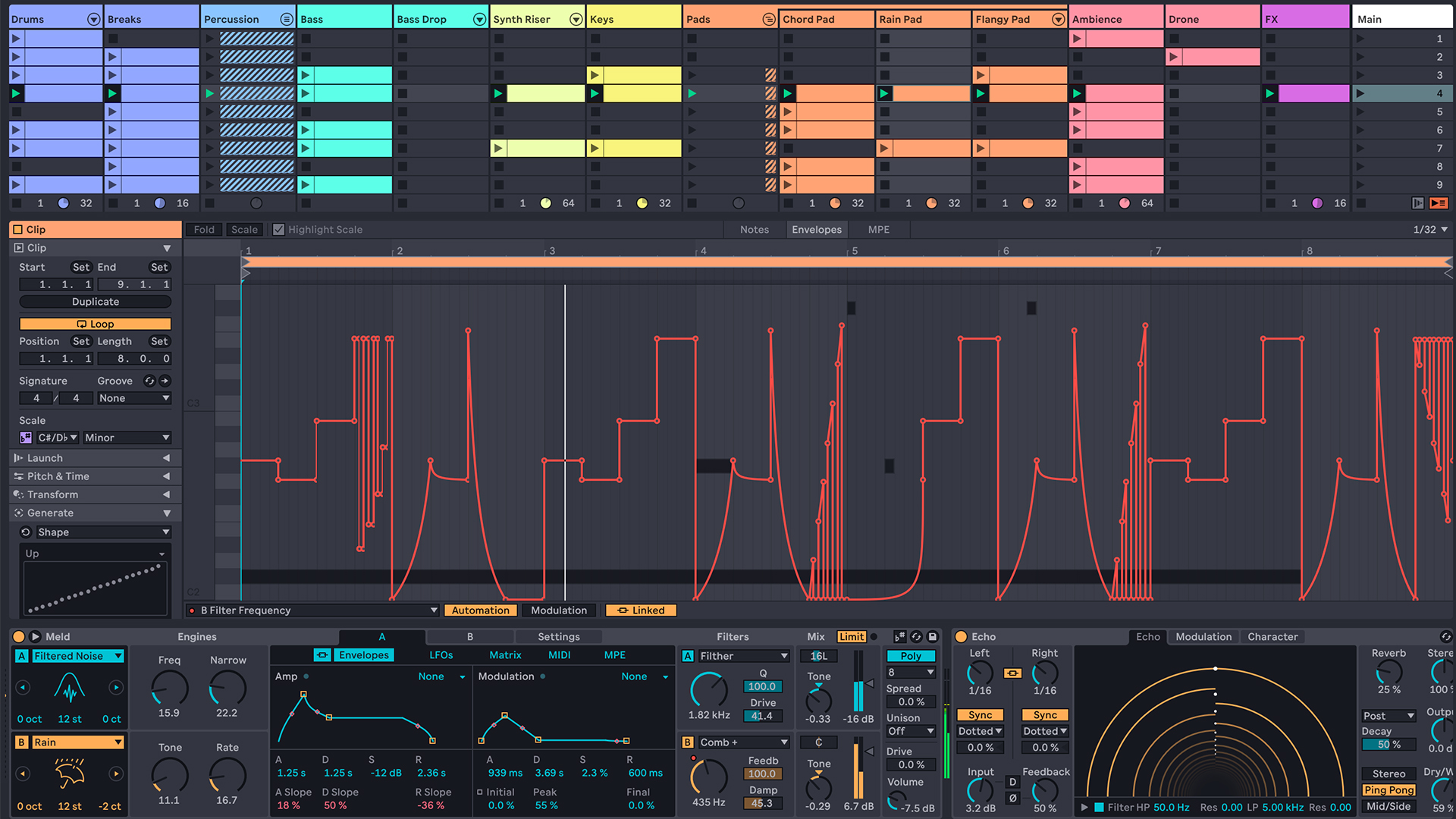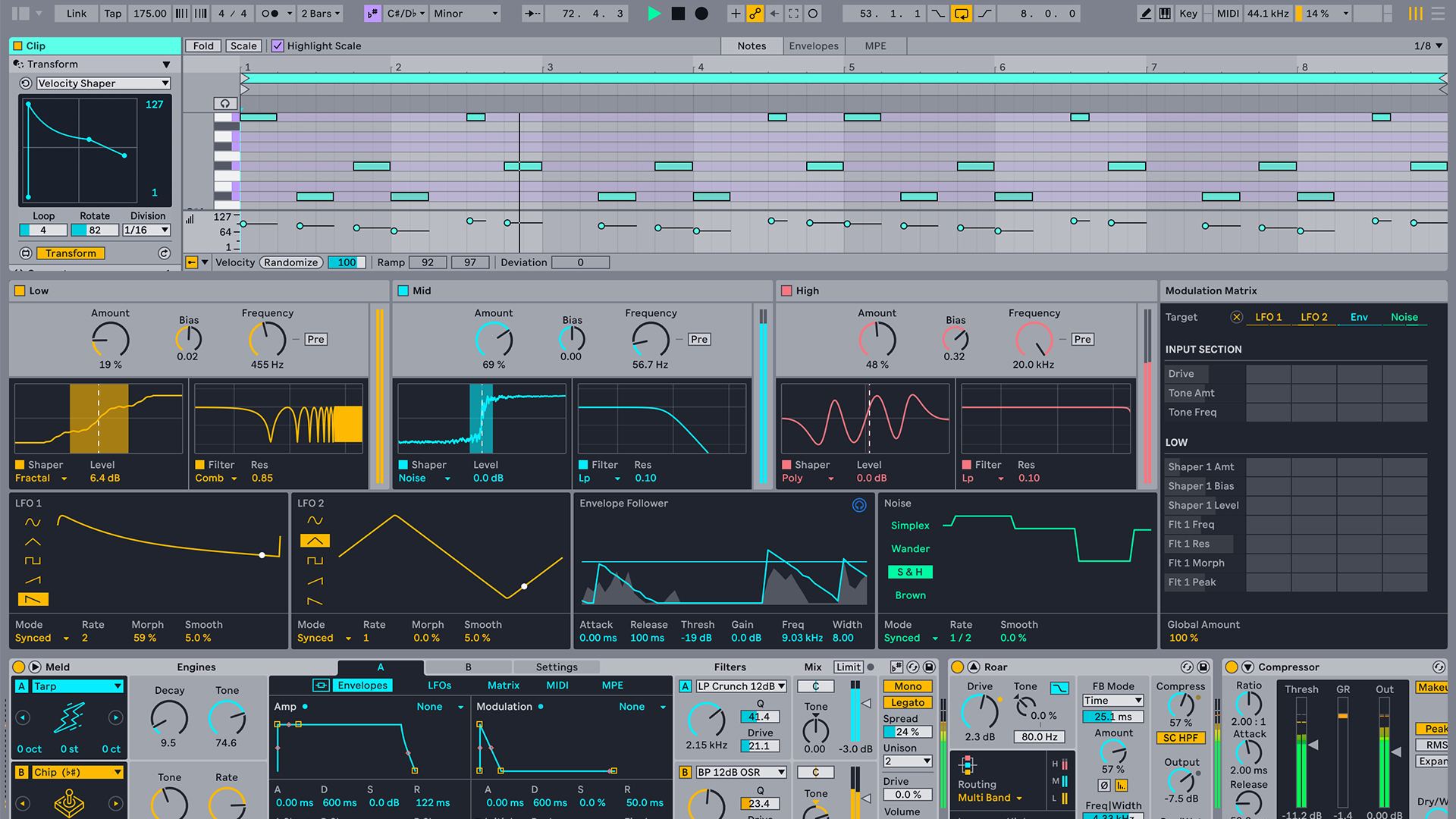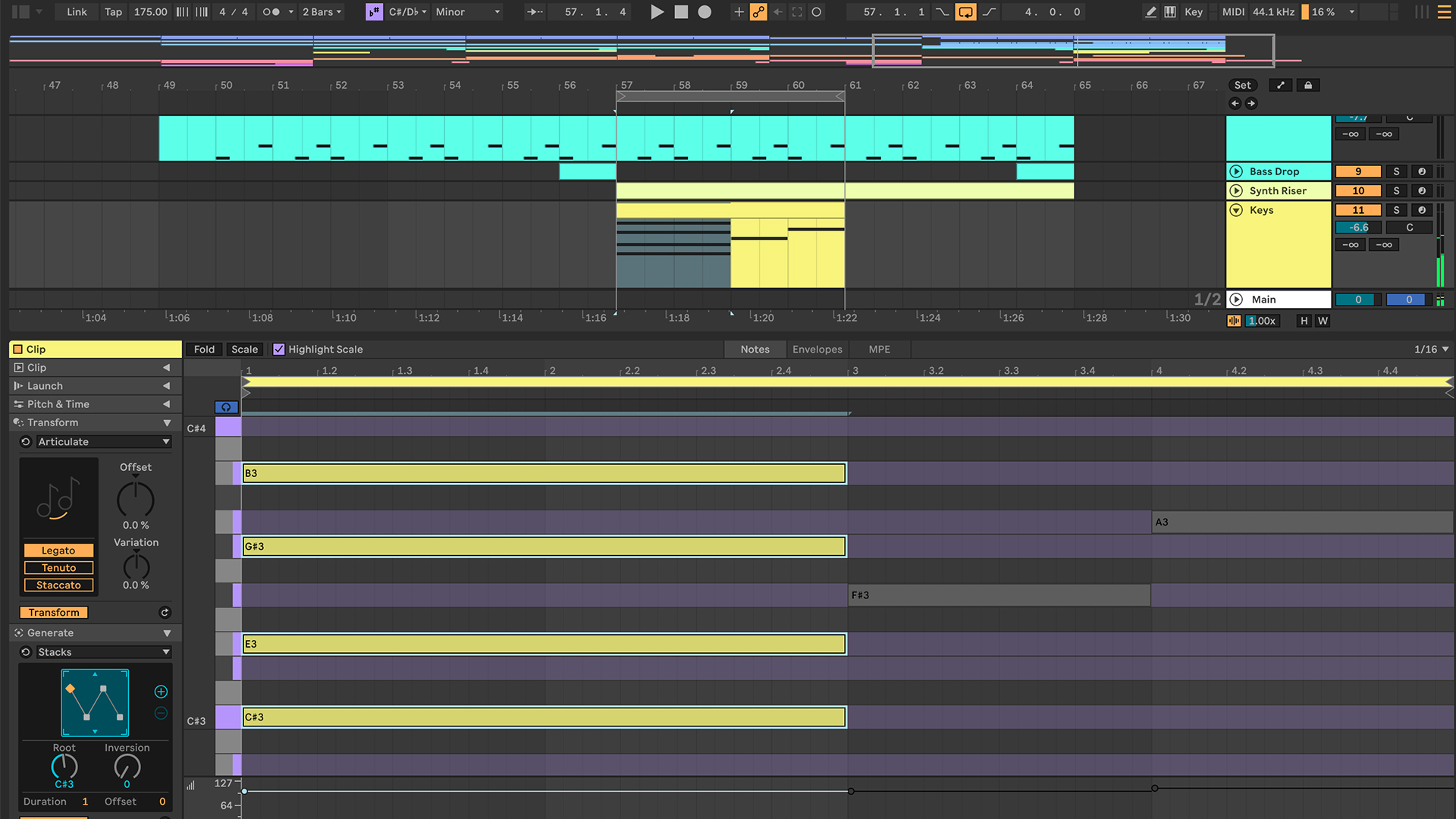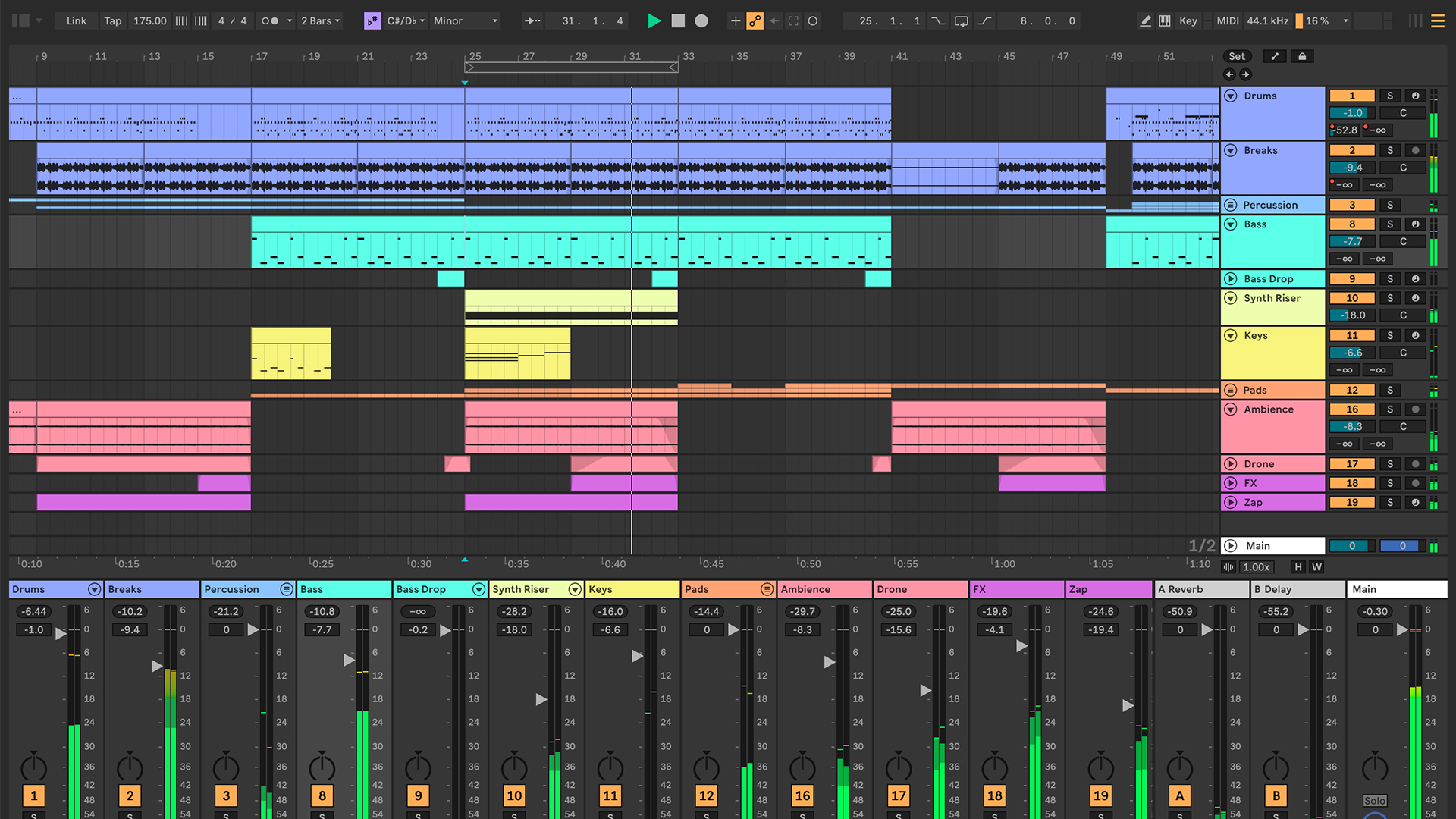The leading software company based in Berlin, renowned for its flagship product Live, pioneered a groundbreaking feature allowing users to organize musical ideas in two distinct ways: via a conventional timeline view or as a collection of clips that can be triggered instantly, revolutionizing the live performance of electronic music as its name suggests.
However, this clip-centric approach has been emulated by other software, notably Apple’s Logic Pro X a few years back and a recent announcement of its integration into a new version of Pro Tools this year.
Since its inception in 2001, Ableton Live has evolved gradually, with updates that might have gone unnoticed due to their subtle yet significant nature.
While many digital audio workstations (DAWs) have undergone complete UI overhauls and introduced numerous new instruments and effects with each update, Live has maintained its familiar interface, featuring the iconic Session view for arranging clips and an Arrangement page resembling the timeline of traditional DAWs, a design appreciated by seasoned users.
However, the introduction of Ableton Live 12 signals a shift, currently available as a Beta for select users but set to launch soon in three versions (Intro, Standard, and Suite), bringing forth a series of workflow enhancements and new instruments poised to captivate both beginners and experienced users alike.
So, what’s in store with Ableton Live 12? Let’s explore the updates.
Features

There have been numerous updates to Ableton Live 12, with two standout features being introduced. Roar presents a bespoke distortion effect amalgamating various distortion types with a versatile modulation matrix. While not the initial distortion/saturation plugin offered by Ableton (there are, in fact, six in total), Roar eclipses its counterparts in terms of intensity.
Roar boasts diverse routing options surpassing conventional distortion devices, including Single, Serial, Parallel, Multi-band, Mid/Side, and an intriguing Feedback mode enabling users to shape the direct signal and resulting Feedback independently, each with dedicated filters, amounts, and bias levels.
The modulation section of Roar offers a plethora of possibilities with two LFOs, an envelope, and a Noise source, all configurable as modulation devices via the user-friendly Modulation Matrix.
Another novel addition is the instrument Meld, a dual-oscillator synth blending the finest features of other Ableton instruments into a flexible new package. While Live has always provided ample built-in instruments, Meld distinguishes itself as Ableton’s most flexible instrument to date, boasting a rich array of presets showcasing its sonic prowess, spanning from robust kicks to deep basses and ethereal strings.
Meld can operate in mono or up to twelve voice polyphony, featuring a built-in limiter to control peaks. Each oscillator offers a selection of waveform sources, with many options transcending typical polysynths, including unique starting points for sound design such as Fold FM, Tarp, Shepard’s Pi, and Rain.
The built-in modulation matrix of Meld, akin to Wavetable introduced in Live 11, is intuitive and straightforward, allowing for quick and easy transformation of sounds.
Significant updates have been made to the Browser window, notably the addition of a “Find Similar” button, simplifying the search for alternative sounds and instrument presets.
Furthermore, filters can now be applied to lists of sounds and plugins, streamlining the search process.
The Browser now retains search history, facilitating navigation across multiple pages.
MIDI clip editing has undergone substantial enhancement in Ableton Live 12, with new features enabling advanced editing, transformation, and generation of MIDI clips.
These features are organized into two new tabs beside the MIDI clip, providing significant workflow enhancements for those who prefer not to manually input notes and ideas.
The “Generate” tab offers four areas to explore, including Rhythmic ideas, Seed, Shape, and Stacks.
Seed generates notes within specified pitch, duration, and velocity ranges, with options to control the number of voices and density.
Shape allows users to draw in melodic shapes with customizable parameters.
Stacks swiftly generates chordal ideas with visual representations for each chord.
The “Transform” tab offers extensive variability, enabling quick adjustments to MIDI data, including arpeggiation, strumming emulation, quantization, and more.
In Use

Utilizing the new functionalities of Ableton Live 12 is merely a fraction of what renders this latest iteration of Live so captivating. Embedded within the user interface are numerous enhancements that, though seemingly minor, collectively streamline the workflow, undoubtedly amplifying the experience compared to prior versions.
Perhaps the most eagerly anticipated improvement for many users is the newfound capability to switch between Arrangement and Session view while accessing the mixer page—a feature long requested and bound to elicit satisfaction.
Previously, viewing the mixer window was restricted to Session view, necessitating frequent toggling between views unless a secondary monitor was utilized. On that note, users can now adjust Zoom levels independently for each window, a subtle yet invaluable adjustment empowering customization within Live.
Numerous other UI refinements abound, such as the display of track colors now appearing at the bottom of tracks as well, not solely on top.
Among the plethora of enhancements in Ableton Live 12, one particularly practical addition is the option to maintain all MIDI clips within a chosen key. This selection can be made on a per-clip and global basis via a newly introduced toggle button atop the interface.
While previously feasible to apply a MIDI effect to confine a MIDI track to a specific key/scale, this was limited to individual tracks rather than globally. Consequently, modifying the key across all tracks proved to be a considerably more cumbersome task, especially in live performance scenarios.
To Be Critical

There’s little room for criticism regarding Ableton Live 12, especially considering that the features mentioned here are just a fraction of all the new changes.
Additionally, a new Tunings functionality, an updated version of the renowned Granulator Max for Live device, enhanced velocity management editing, and much more have been introduced.
Most of these new features seamlessly integrate, allowing existing Ableton Live users to maintain their workflows effortlessly.
However, a few of the new features in Ableton Live 12 exhibit some clumsiness. While the new Browser features are enjoyable, the absence of automatic sorting of plugins into AU, VST, and VST3 categories like in Live 11 was noticeable.
Although it’s possible to manually sort plugins by clicking relevant buttons in Ableton Live 12, this extra step was somewhat inconvenient, and an automatic sorting feature akin to previous versions would have been preferred.
Lastly, the inability to transfer and save MIDI mappings between sessions in Live remains a significant omission. This feature has been requested for a long time and would have been warmly welcomed in Ableton Live 12.
Summing Up Ableton Live 12

Ableton Live 12 represents a significant advancement for the flagship software. The introduction of features like Roar, Meld, and the enhanced MIDI clip editing and generative tools alone justifies the upgrade cost. However, delving deeper reveals numerous workflow enhancements that propel Live 12 beyond its predecessor.
Ableton has adeptly maintained Live’s balance between accessibility for novices and depth for experienced users. While I’ve thoroughly enjoyed using Live 11 as my primary DAW, the potential of Live 12 to elevate my production skills in the studio is evident. I eagerly anticipate incorporating its capabilities into my workflow.


